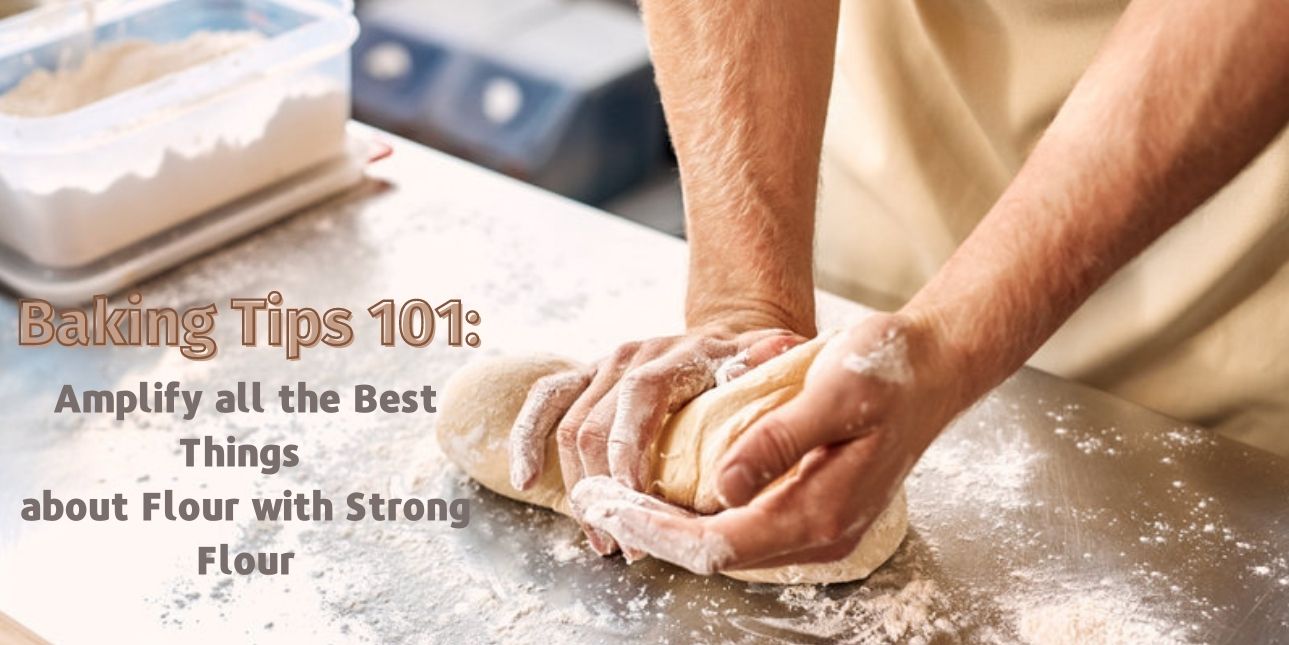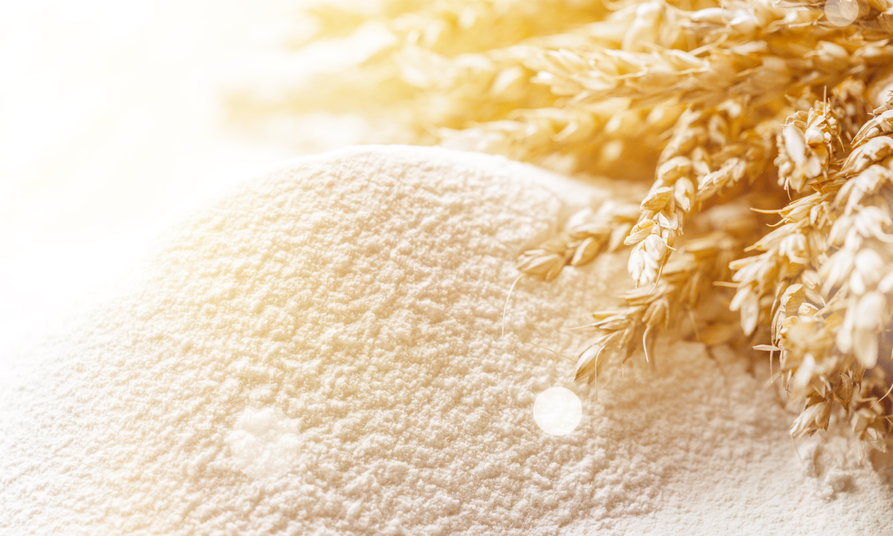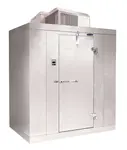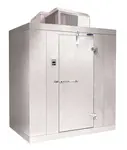
For bakeries, confectioners, pizzerias, and dessert places, flour is the key ingredient that binds everything together. You can create amazing dishes and recipes with flour. Without flour, delicious pizza dough, bagels, buns, and all breads would simply not exist. Strong flour is one of the primary ingredients that is used to make bread and other dough-based products.
In this article, we discuss what is strong flour, strong floor windowpane test, the difference between strong flour and weak flour, how to store strong floor in the freezer, the best ways to store flour, and some strong white flour recipes that will help you start your bakery or confectionery place.
The Meaning of Strong Flour
If you own a bakery or sell confectionaries, it is important to understand the different types of flours. There are primarily two types of flours that are used by bakers and confectioners - weak flour and strong flour. The term ‘strong flour’ describes the type and strength of the flour. Bakeries prefer strong flours to make bread. Strong flour has high protein content. In addition, the gluten generated from strong flour has high elasticity.
What is Strong Flour, and How is It Different From Weak Flour?
Strong flour is also known as bread flour. As discussed above, strong flour has high protein content and high elasticity. These flours have extremely high gluten content, up to 13 or 14 percent. While weak flour is made from soft wheat and is the preferred choice for making cakes and biscuits, they also have a low protein content and produce a soft and flowy dough.
Strong Flour Windowpane Test
With strong flour, you will need to knead the flour continuously to create the elastic gluten structure. To test the gluten structure or quality of the kneaded dough, you can stretch a small dough ball until it becomes translucent. The dough should not break during this process. If the dough stays intact without breakage, then you have enough gluten in the kneaded dough. This is called the ‘Windowpane Test for Strong Flour'.
Strong White Flour Recipes For Your Kitchen

You can create some delicious dough-based products with strong flour. You can create bagels, bannocks, buns, and other white flour food products. Strong white flour is usually made from hard wheat or a mixture of soft and hard wheat. Strong white flour has a high protein content and is processed to remove all bran and wheat germ. Hard or strong flour also has a high capacity to retain water content. Here is a list of strong flour recipes that are perfect for your commercial kitchen:
Pizza Dough: You can make authentic Italian pizza dough for your pizzeria or restaurant with strong flour. To make pizza dough, you need strong white flour and extra flour for dusting, dried easy blend yeast, fine salt, warm milk, olive oil, warm water, passata, and other toppings or ingredients depending upon your recipe. To make delicious homemade pizzas, you will need strong bread flour. If you wish to store huge amounts of pizza dough for high-volume operations, you will need commercial walk-in refrigeration solutions. Walk-in freezers or refrigerators will help you prolong the shelf life of pizza dough.
Wholemeal Bread: Wholemeal bread is delicious, and it does not rise as a white loaf. Also, the texture of wholemeal bread is denser because of bran in the flour that inhibits the effectiveness of the gluten. First, you need to add strong wholemeal bread flour, and to make it fluffier, you can add strong white flour to the wholemeal dough mix. You will also need fast-action dried yeast, fine salt, black treacle, and vegetable or olive oil to make the perfect wholemeal bread for your patrons. Wholemeal bread is rich in flavor and essential nutrients.
White Bread: White bread is one of the most popular types of bread. To make white bread, you need more strong white bread flour than usual to knead it perfectly. You also need to add butter, fast-action dried yeast, tepid water, and a little bit of olive or sunflower oil. Ideally, your white bread will become crusty or crispy on the outside and soft on the inside with strong bread flour.
Sourdough Bread: Sourdough bread is a great choice for health-conscious people. You can serve sourdough bread to your more health-conscious patrons as sourdough bread works as a prebiotic. The fiber content in sourdough bread helps in increasing good bacteria in the intestines. It is perfect for a stable and healthy digestive system. Also, the gluten content in sourdough bread is lower than other types of bread. To make sourdough bread, you will need strong bread flour and extra flour for dusting, a sourdough starter, salt, tepid water, and some olive oil for kneading.
Bagels: Bagels are a favorite across all age groups. Bagels are one of the most ordered items in cafes, dessert places, bakeries, and restaurants. To make regular bagels, you will need strong white bread flour, and extra flour for dusting. You will also need some salt, fast-acting yeast, honey, vegetable oil, fine polenta for sprinkling purposes, and beaten eggs. You can also add molasses or treacle in the water when you are boiling the bagels to add a unique twist and sweetness. You can also garnish your bagels with sweet or savory flavors depending upon your needs.
How to Store Flour in the Freezer?
Flour has a high shelf life if it is stored at ideal temperatures. Flour’s shelf life is maintained in optimal conditions like cold, dry and dark spaces. To store flour over a prolonged period, you can put it in a freezer. Commercial walk-in freezers are perfect for summer and warmer climates. In hot and humid climate conditions, the temperature and humidity levels fluctuate. To prevent contamination of flour and to prolong the shelf life, freezing is ideal. You can keep the flour in a vacuum sealed bag or container, and store it in the refrigerator for extending the shelf life of the flour. You can safely freeze flour for up to two years!
The Best Ways to Store Flour
If you wish to prolong the shelf life of flour and reduce the chance of contamination, you may want do the following:
Lid: The lid plays an important role in keeping the flour safe from any type of contamination. Make sure that the lid closes properly so that air can’t pass into the container.
Size and Shape of the Container: You can purchase a container depending upon your needs and available space. You can opt for a tall or narrow container depending upon the quantity of the flour and whether you want to keep it stacked.
Material: You can choose from various options to store flour. Opt for acrylic, glass, or plastic containers. Also, you can purchase clear containers for easy accessibility and visibility.
Storage Space: You can store flour depending upon the type of storage space available. For freezers and refrigerators, you can opt for vacuum sealed containers or bags. For general pantry storage, you can opt for glass or plastic containers.
Strong white bread flour is highly versatile and is one of the primary ingredients for many dough-based recipes. But it is important to note that dough or flour can get contaminated easily. It is thus essential to take the necessary steps to store dough or strong flour in ideal conditions.










